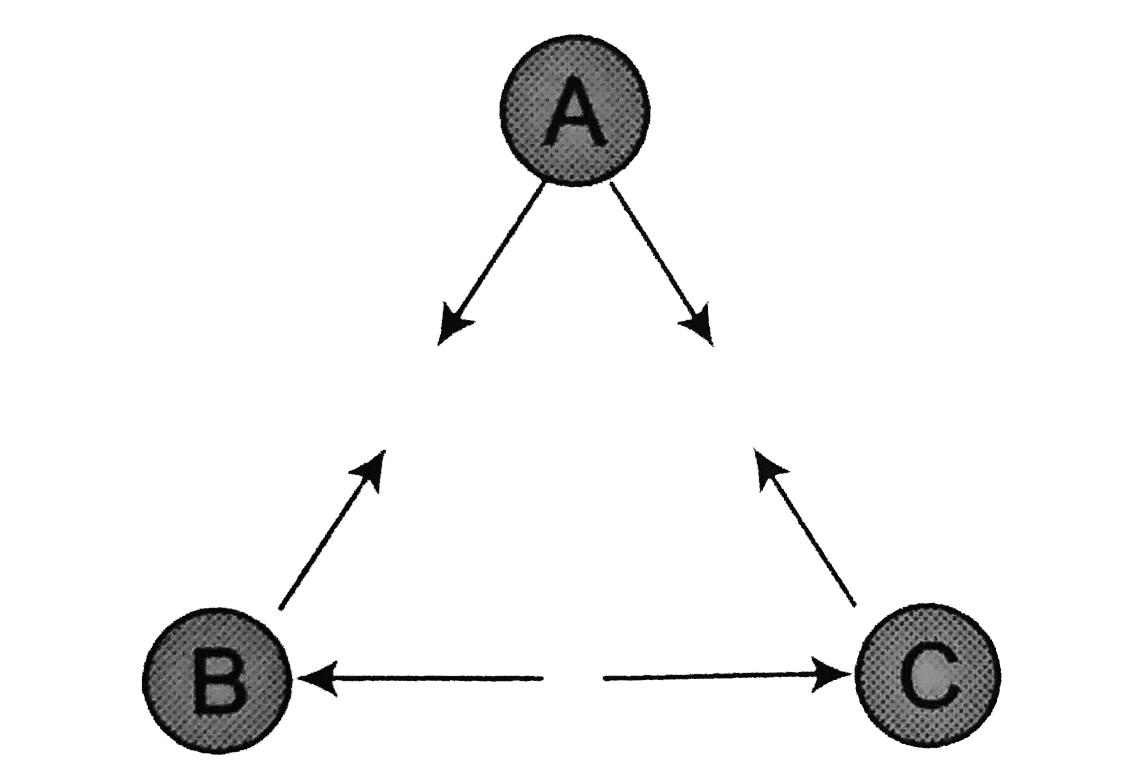A diatomic gas does 2000J of work when it is expanded isobarically. Find the heat given to the gas in the above process (in kJ). Solution in Gujrati
7000
7
5000
5
The correct Answer is:B
For a diatomic gas, and
The work done is an isobaric procers is
or
The heat given in an isobaric process is
Topper's Solved these Questions
- TEST PAPERSBook:ALLEN Chapter:TEST PAPERSExercise:Part-1 Physics
Explore 15 Videos
- TEST PAPERSBook:ALLEN Chapter:TEST PAPERSExercise:part-2 physics
Explore 73 Videos
- TEST PAPERSBook:ALLEN Chapter:TEST PAPERSExercise:PAPER 2
Explore 60 Videos
- TEST PAPER 4Book:ALLEN Chapter:TEST PAPER 4Exercise:PHYSICS
Explore 45 Videos
- UNIT & DIMENSIONS, BASIC MATHS AND VECTOR Book:ALLEN Chapter:UNIT & DIMENSIONS, BASIC MATHS AND VECTOR Exercise:Exercise (J-A)
Explore 7 Videos
Similar Questions
A quantity of 2 mole of helium gas undergoes a thermodynamic process, in which molar specific heat capacity of the gas depends on absolute temperatureT , according to relation:
C=3RT4T0
where T0 is initial temperature of gas. It is observed that when temperature is increased. volume of gas first decrease then increase. The total work done on the gas until it reaches minimum volume is :-
View SolutionA bead is connected with a fixed disc of radius R by an inextensible massless string in a smooth horizontal plane. If the bead is pushed with a velocity v0 prependicular to the string, the bead moves in a curve and consequently collapses on the disc. Then

View SolutionThe diagram shows the arrangement of three small uniformally charged spheres, A,B and C. The arrow indicate the direction of the electrostatic forces acting between the spheres (for example, the left arrow on sphere A indicates the electronstatic force on sphere A due to sphere B). At least two of the spheres are positively charged. Which sphere, if any, could be negatively charged?

View SolutionTwo forces, each of magnitude F have a resultant of the same magnitude F. The angle between the two forces is
View SolutionMatch List I with List II and select the correct answer using the codes given below the lists :

View SolutionA diatomic gas (γ=1.4) does 200 J of work when it is expanded isobarically. Find the heat given to the gas in the process.
View SolutionA diatomic gas done 80J work when expanded isobarically. Find the heat given to the gas during this process?
View SolutionA diatomic gas (γ = 1.4) does 300 J work when it is expanded isobarically. The heat given to the gas in this process is
View SolutionA diatomic gas with rigid molecules does 10J of work when expanded at constant pressure. The heat energy absorbed by the gas, in this process is ___________ (in J).
View SolutionA diatomic gas (γ = 1.4) does 300J work when it is expanded isobarically. The heat given to the gas in this process is
View SolutionA diatomic gas does 80 J of work when expanded isobarically. The heat given to the gas during this process is
View SolutionA diatomic gas (γ=1.4) does 200 J of work when it is expanded isobarically. Find the heat given to the gas in the process.
View SolutionA diatomic gas does 100 J of work when it is expanded isobarically. The heat given to the gas during this process is
View SolutionFind the molar heat capacity in a process of a diatomic gas if it does a work of Q/4 when a heat of Q is supplied to it
View SolutionA diatomic gas ( gamma = 1.4) does 300 J work when it is expanded isobarically. The heat given to the gas in this process is
View SolutionIn given PV graph process CA is adiabatic. Find work done in process CA if gas is diatomic (γ=1.4)

View Solution